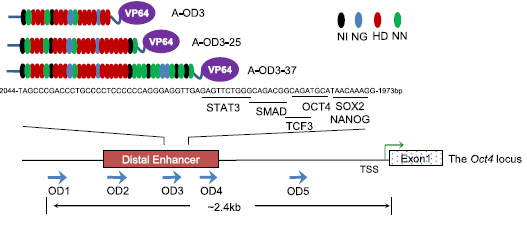Unique route to stem cells

Researchers have developed a new method to produce stem cells using designed proteins. The new system is more precise and more natural than current techniques and the team believe it could be a more efficient and safer route to producing stem cells.
Stem cells have the potential to be used to replace dying or damaged cells with healthy cells. This repair could have wide-ranging uses in medicine such as organ replacement, bone replacement and treatment of neurodegenerative diseases. This study brings closer to realising the full potential of stem cell technology.
“We have gone down a completely different road to standard practices to produce stem cells from adult cells. Current techniques to reprogramme cells are inefficient and it’s imperative to find other ways to create stem cells.
“We hope that our novel approach to reprogramming cells into stem cells will become a new and safer alternative to current practices.”
Dr Pentao Liu, senior author from the Wellcome Trust Sanger Institute
The team looked at proteins called transcription factors, which regulate the activity of all human genes. Each transcription factor acts to modify the activity of several or many genes.
A key set of these transcription factors are able to convert or reprogramme adult cells into induced pluripotent stem cells or iPS cells. However, these factors also act on many genes other than those involved in reprogramming.
The team developed artificial designer transcription factors to target those key reprogramming genes more accurately, minimizing activity on other genes.
“This is a promising and exciting development in our attempt to produce iPS cells that lend themselves in practical applications. We have shown that targeting gene-control regions, called enhancers, in this structured way is a very effective in controlling a gene and reprogramming cells to become iPS cells.”
Dr Xuefei Gao First author from the Wellcome Trust Sanger Institute
In conventional methods, the transcription factors used to programme cells take part in complicated ways – and target many different parts of the genome – as they are used to reprogramme the cells to become stems cells. As a result, the throughput of successfully reprogrammed cells can be low and the additional number of steps can have associated risks, such as affecting genes that can influence tumour development.
The designer transcription factors are extremely accurate. Because this method targets key genes directly and avoids additional genetic detours, it reduces the potential risks linked with standard practices.
The team looked at the structure of some unique transcription factors, called TALEs, and used a modular approach of taking the required components of designer transcription factors and stitching them together to make more precise and more specific factors that work only on the genes the team need to target. They hope this precision will lead to better and safer systems. The modular method should also make the development of new factors easier, speeding progress to a suite of stem cells for research and therapeutics.
Using designer transcription factors, the team successfully reprogrammed two cell types to become iPS cells; fibroblasts and EpiSCs. This method is also a promising way to ensure that stem cells divide and grow to form specific cell types such as heart cells, bone cells or brain cells.
“Stem cells hold enormous potential to help us understand and treat human disease, but currently there are gaps in our knowledge of how best to manipulate them. This is a unique and visionary way of bypassing many of the limitations currently associated with the manipulation of stem cells for both basic science and therapeutic applications.”
Professor Allan Bradley Director Emeritus of the Wellcome Trust Sanger Institute
More information
Funding
This work is supported by Wellcome Trust.
Participating Centres
- Wellcome Trust Sanger Institute, Hinxton, Cambridge CB10 1HH, UK
- Key Laboratory of Regenerative Biology, Guangzhou Institute of Biomedicine and Health, Chinese Academy of Sciences, Guangzhou 510530, China
Publications:
Selected websites
The Wellcome Trust Sanger Institute
The Wellcome Trust Sanger Institute is one of the world’s leading genome centres. Through its ability to conduct research at scale, it is able to engage in bold and long-term exploratory projects that are designed to influence and empower medical science globally. Institute research findings, generated through its own research programmes and through its leading role in international consortia, are being used to develop new diagnostics and treatments for human disease.
The Wellcome Trust
The Wellcome Trust is a global charitable foundation dedicated to achieving extraordinary improvements in human and animal health. We support the brightest minds in biomedical research and the medical humanities. Our breadth of support includes public engagement, education and the application of research to improve health. We are independent of both political and commercial interests.


